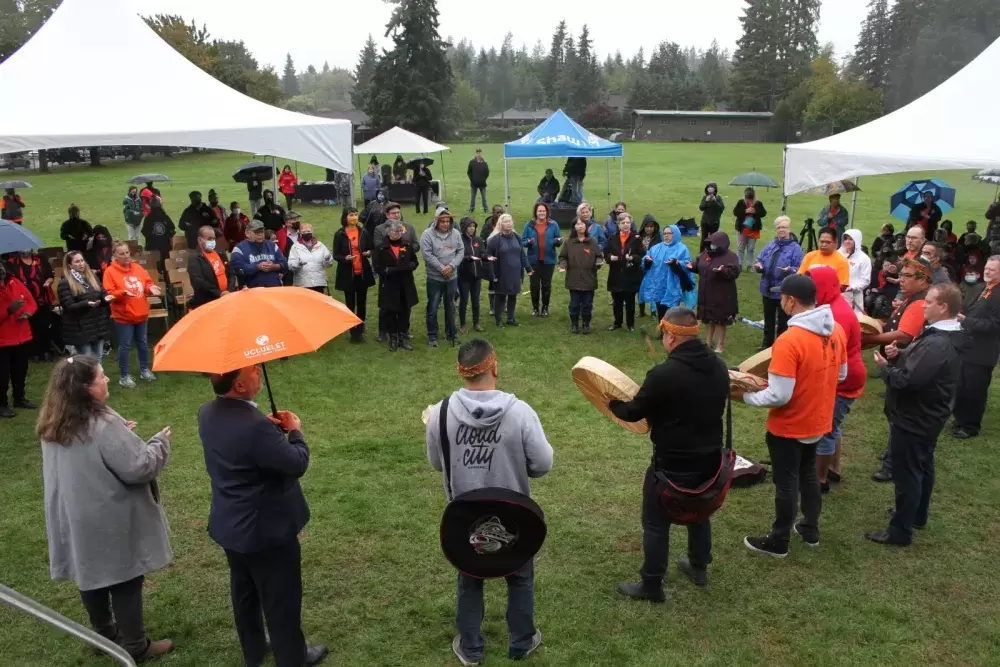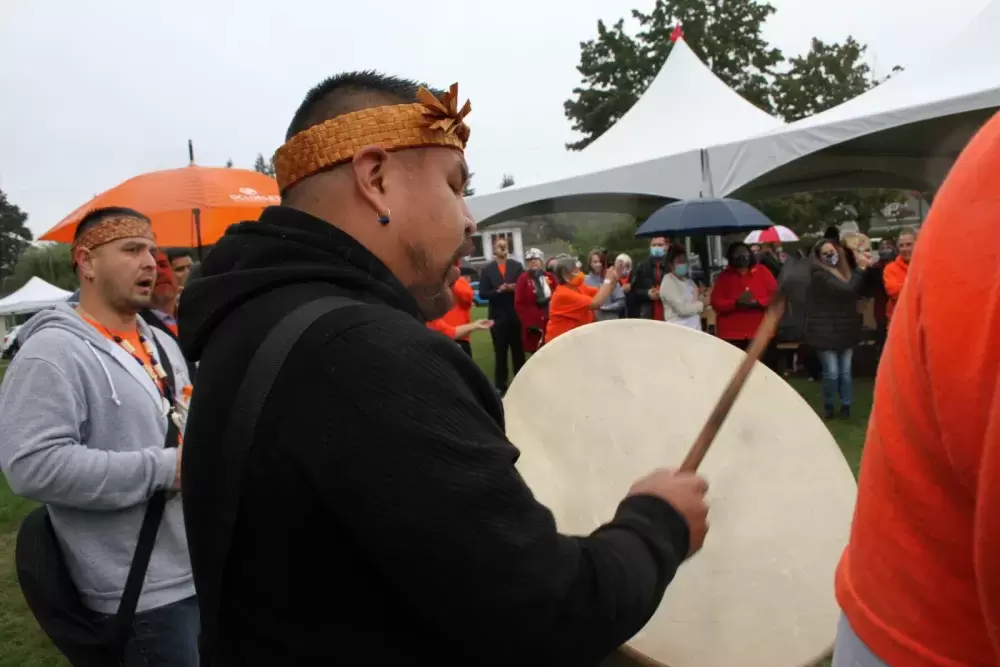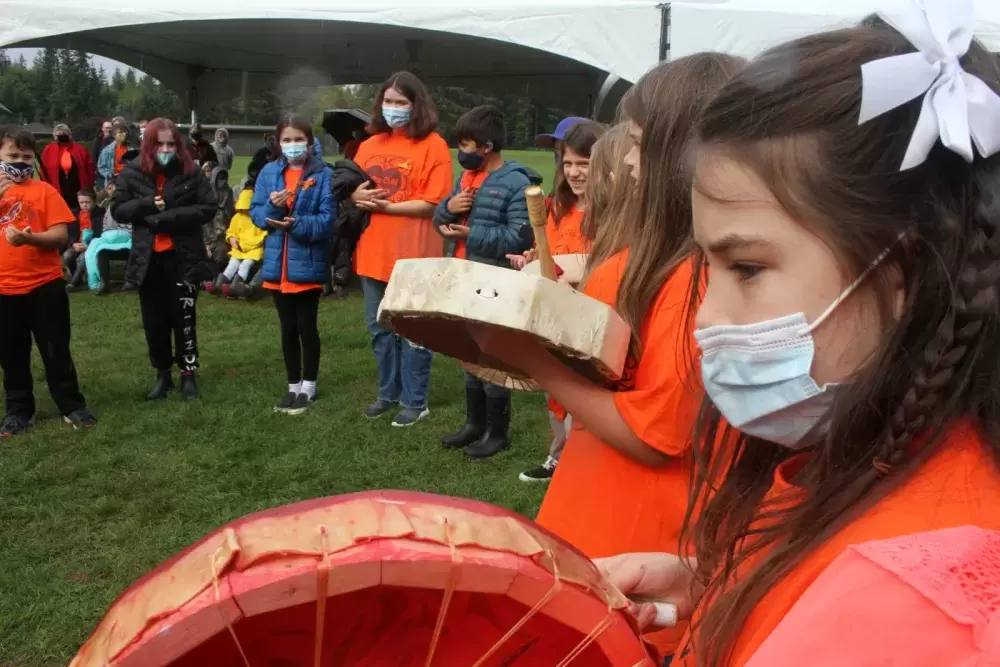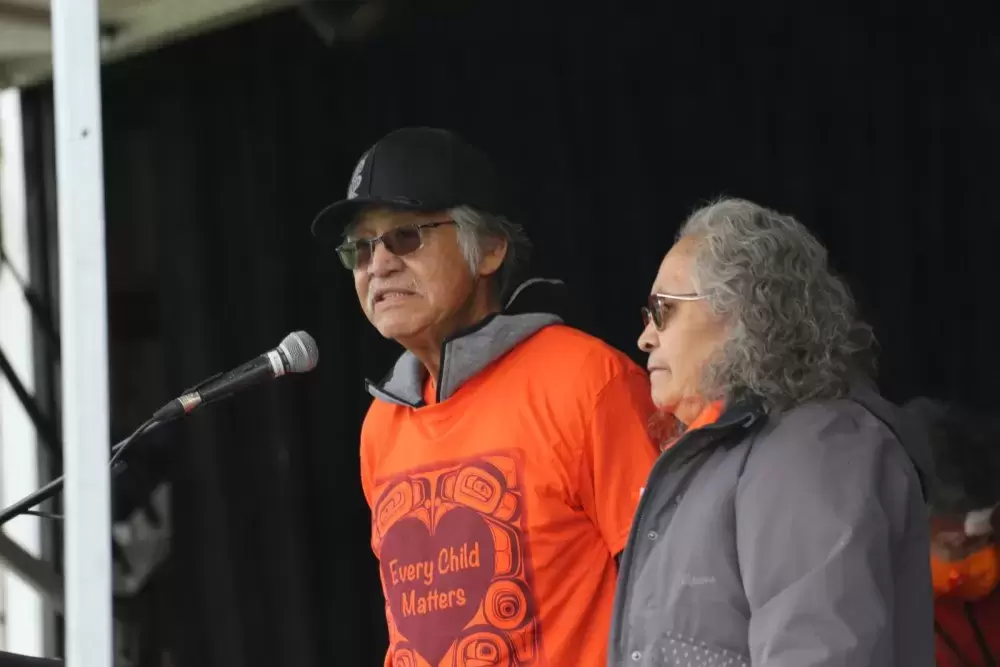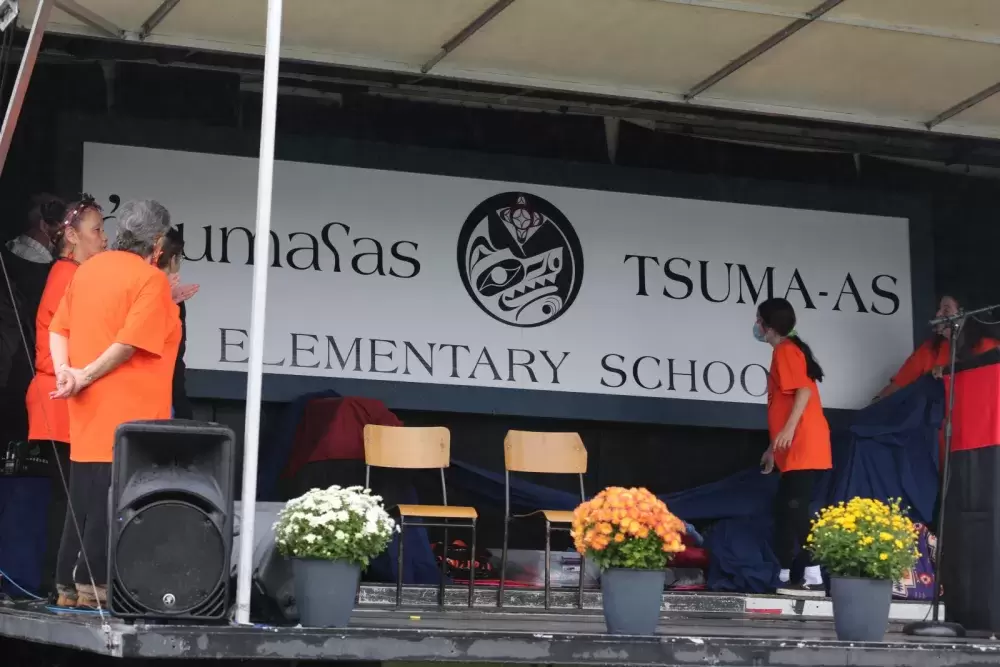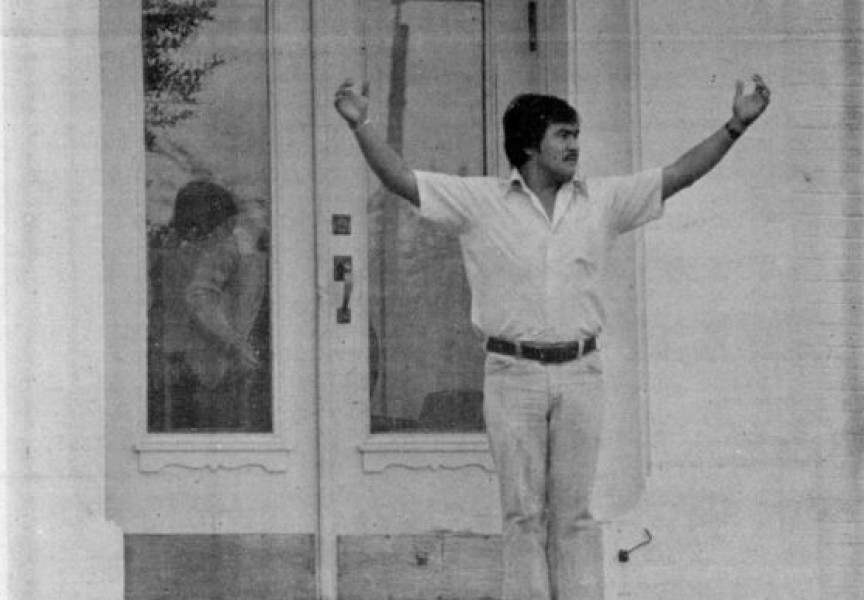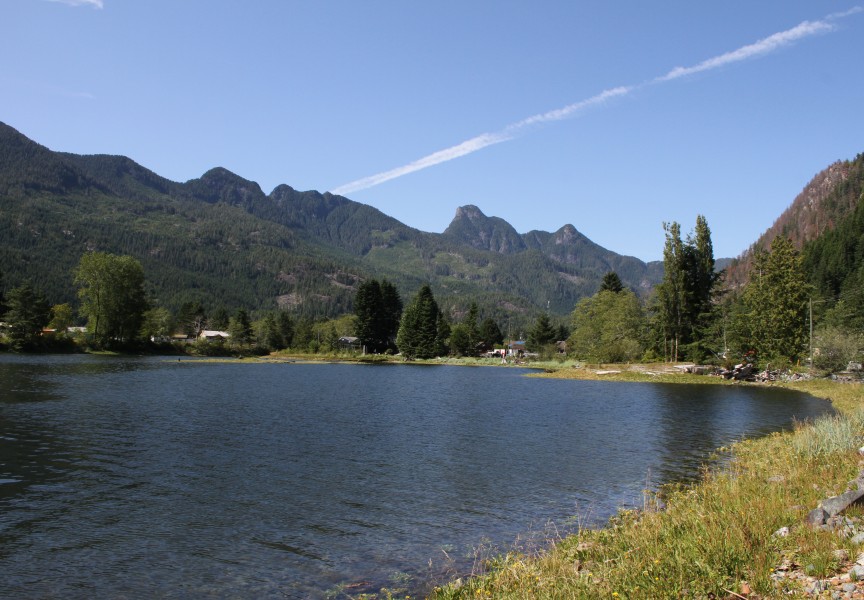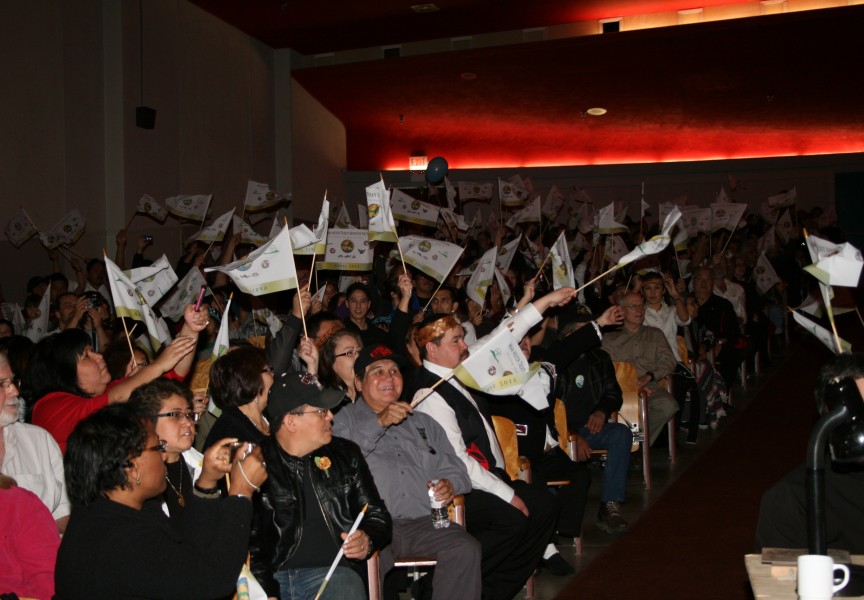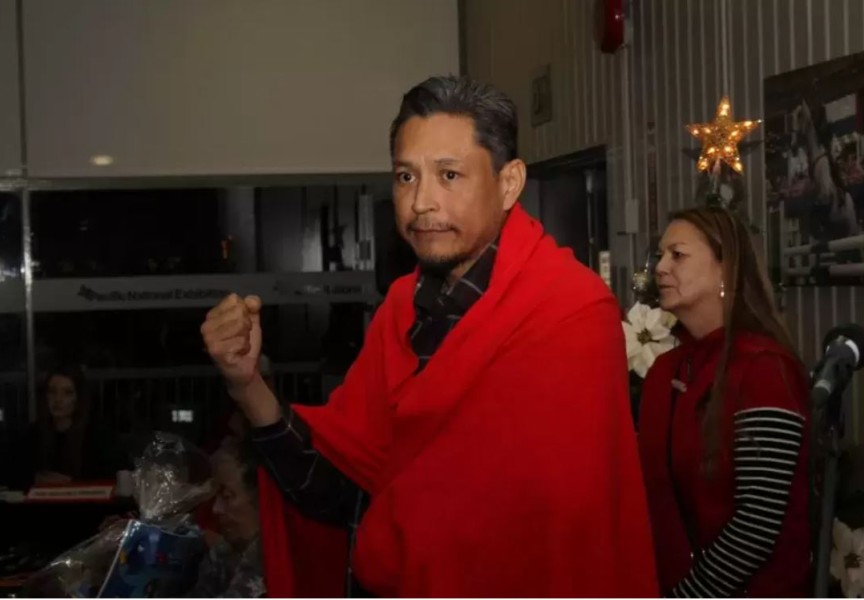In a shift away from recognizing a past leader who stood for “a white British Columbia”, the name of a Port Alberni elementary school has been changed to honour the river that connects the community.
Today A.W. Neill was dropped from the school on Compton Road, which is now called c̓uumaʕas (Tsuma-as) Elementary. Pronounced ‘tsu ma-as’, the new name gives a nod to the local First Nations who have lived off of the Somass River for generations.
“c̓uumaʕas originally refers specifically to a small creek at the village site,” explained Tseshaht Councillor Ed Ross during the Sept. 29 name changing event. “The meaning of the term is cleansing, a washing down in reference to autumn rains swelling the little creek and washing away the remains of many fish gutted on the shore.”
As the early autumn rain fell, the concept of cleansing seemed fitting, given A.W. Neill’s legacy of supporting the residential school system and the segregation of Asian Canadians. Over the first half of the 20th century, Alan Webster Neill was undeniably popular among voters in the region. He was elected as a representative in B.C.’s legislature in 1889 and 1900. He served as an alderman on the Town of Alberni’s first council in 1912, then became mayor in 1916. This was followed by 23 years as a member of parliament, representing Comox-Alberni from 1921-45.
Neill also worked as an Indian agent for the west coast of Vancouver Island, enforcing government policies of assimilation, including the attendance of Indigenous children in the residential school system.
He was a vocal opponent of Asian immigration, pushed for fishing licences to only be given to British subjects, and was a strong supporter of the internment of Japanese Canadians during World War II.
“We stand for a white British Columbia,” said Neill during a speech in the House of Commons in 1922.
Ironically, countless students who came from backgrounds Neill would have opposed attended the school over the years, some of whom spoke during the Sept. 29 event. Nuu-chah-nulth Tribal Council President Judith Sayers was a student in Grades 8, 9 and 10.
“All of you children that have come here to witness this day, always remember that today a large black cloud was lifted for Indigenous people from this school – and for everybody,” she said. “It wasn’t easy being a First Nations people attending a school when you were very much in the minority. Things have changed considerably in this world.”
Ed Ross recalls his years at the school after graduating from Haahuupayak, which is located on the Tseshaht reserve.
“We weren’t taught that there were different colours of people when we were there,” he said of his time at Haahuupayak.
But this changed when Ross moved on to A.W. Neill.
“There was a bold line of First Nations and white people,” he said. “There was a lot of stereotypes.”
But A.W. Neill also introduced some former students to a larger world after moving on from residential school. Wally and Donna Samuel stood up to speak of their time at Neill after attending the Alberni Indian Residential School.
“I haven’t been out on this field since ’63 or ’64,” observed Samuel. “Coming to A.W. Neill, we didn’t know what the name meant. It didn’t matter to us at the time, it was just a place where we went to get educated, and it was a place to get out of the residential building. This was a good place for us.”
Samuel recalls making friends at A.W. Neill that he has kept to this day.
“This was one of our first long-time contacts with non-Indigenous people here. Yes, there were some people who weren’t nice, but some of them were,” he said. “Coming down that road, turning that corner, we used to get all excited. The guys used to start combing their hair. ‘We’re going to see the white girls. They’re not our cousins’.”
The name change is the result of a process that School District 70’s board of trustees began six years ago. Board Chair Pam Craig explained that the unpopular side of A.W. Neill’s legacy was brought to them by Christopher Stevenson, a former Alberni District Secondary School student. More investigation into Neill’s past followed, as did consultation with the Tseshaht and Hupacasath First Nations, the City of Port Alberni, parents and students, who brought forth ideas for a new name.
“We had amazing responses from the students, and their focus was on the environment and nature,” said Craig. “And then the talk came around the connection and a river connecting us. That’s eventually how we ended up with the c̓uumaʕas name.”
“We are grateful for the research of Dr. Ian Baird, whose account of A.W. Neill’s history helped us understand how his treatment of Asian Canadians and his support for Indian residential schools did not fit with the district’s values and was not worthy of a school name,” said SD 70 Superintendent Greg Smyth.
“The school changing its name today is a big day for me,” added Ross. “It’s a big day because we’re walking and doing this together. Showing these kids what it’s like to be together, that’s the Port Alberni I want to be a part of.”

